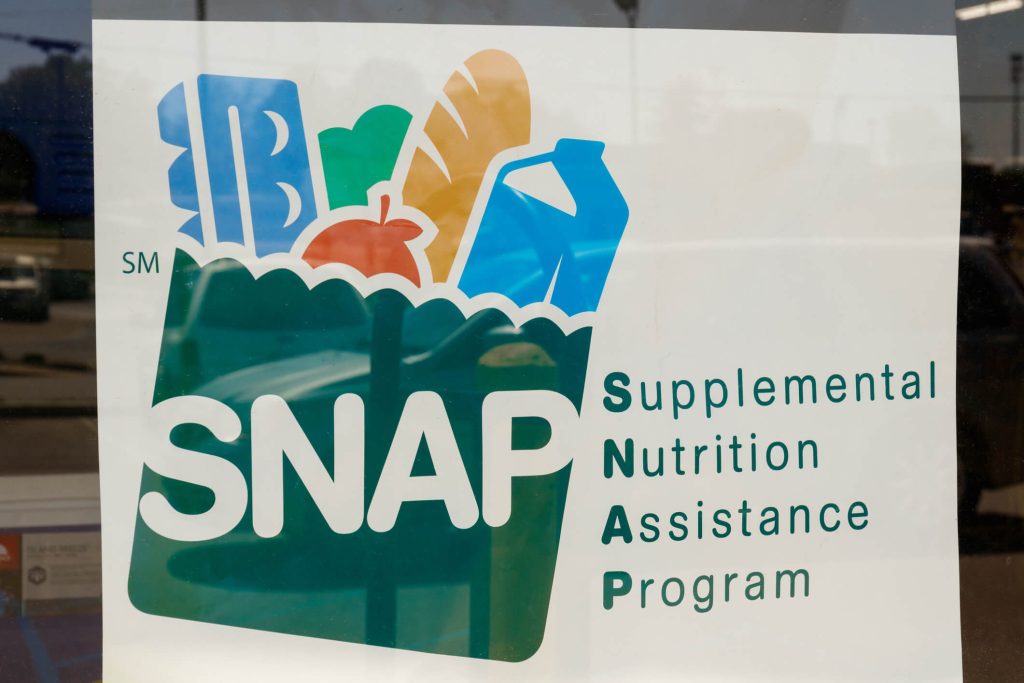
By admin May 16, 2024
Electronic Benefit Transfer (EBT) processing is a system that allows eligible individuals and families to receive government assistance benefits through a debit card. This method of payment replaces the traditional paper-based system, providing a more efficient and secure way for recipients to access their benefits. EBT processing has revolutionized the way government assistance programs are administered, making it easier for recipients to access their benefits and for merchants to accept payments.
Understanding Electronic Benefit Transfer (EBT)
EBT is a system that electronically delivers government assistance benefits to eligible individuals and families. It is a secure and convenient method of payment that eliminates the need for paper checks or vouchers. Recipients are issued an EBT card, similar to a debit card, which they can use to make purchases at authorized retailers. The card is loaded with the recipient’s benefits, and the amount is deducted from the balance each time a purchase is made.
The EBT system is used for various government assistance programs, including the Supplemental Nutrition Assistance Program (SNAP), Women, Infants, and Children (WIC), and Temporary Assistance for Needy Families (TANF). Each program has its own eligibility requirements and benefit amounts, but they all utilize the EBT system for payment processing.
Evolution of EBT Processing
The concept of electronic benefit transfer dates back to the 1980s when the U.S. Department of Agriculture (USDA) began exploring ways to modernize the distribution of food stamps. The first EBT pilot program was launched in 1984 in South Carolina, using magnetic stripe cards to distribute benefits. Over the years, the technology and infrastructure supporting EBT processing have evolved, leading to the widespread adoption of the system across the United States.
Today, EBT processing has become the standard method of payment for government assistance programs. The use of EBT cards has replaced paper-based systems, reducing administrative costs and improving the overall efficiency of benefit distribution. The evolution of EBT processing has also led to increased security measures, ensuring that benefits are delivered to the intended recipients and reducing the risk of fraud.
Key Benefits of Accepting EBT Payments
Accepting EBT payments can provide numerous benefits for merchants. From increased customer base and revenue to streamlined payment processes and enhanced security, EBT processing offers advantages that can significantly impact a business’s bottom line.
Increased Customer Base and Revenue
By accepting EBT payments, merchants can tap into a large customer base that relies on government assistance programs. According to the USDA, over 42 million Americans received SNAP benefits in 2020. By catering to this customer segment, businesses can attract new customers and increase their revenue potential. Additionally, accepting EBT payments can help businesses build a positive reputation within the community by supporting those in need.
Streamlined Payment Process
EBT processing simplifies the payment process for both merchants and customers. Instead of dealing with paper checks or vouchers, customers can simply swipe their EBT card and enter their PIN to complete the transaction. For merchants, this means faster and more efficient payment processing, reducing the time spent on manual verification and reducing the risk of errors.
Enhanced Security and Fraud Prevention
EBT processing offers enhanced security measures compared to traditional paper-based systems. EBT cards are equipped with security features such as PINs and encryption, making it difficult for unauthorized individuals to access the benefits. Additionally, the electronic nature of EBT processing allows for real-time monitoring and detection of fraudulent activities, further reducing the risk of fraud.
How Does EBT Processing Work?
EBT processing involves several steps, from the issuance of EBT cards to the settlement and funding of transactions. Understanding the process is essential for both merchants and recipients to ensure smooth and secure payment transactions.
EBT Card and PIN
Recipients of government assistance programs are issued EBT cards, which function similarly to debit cards. These cards are typically issued by state agencies and are personalized with the recipient’s name and other identifying information. Each card is associated with a unique Personal Identification Number (PIN), which the recipient must enter to authorize transactions.
Authorization and Transaction Processing
When a recipient makes a purchase using their EBT card, the transaction is authorized in real-time. The merchant’s point-of-sale (POS) system communicates with the EBT processing network to verify the recipient’s eligibility and available balance. Once the transaction is authorized, the purchase amount is deducted from the recipient’s EBT account.
Settlement and Funding
After the transaction is authorized, the settlement process begins. The merchant’s acquiring bank or payment processor collects the transaction details and submits them for settlement. The settlement process involves transferring the funds from the recipient’s EBT account to the merchant’s account. This typically occurs within a few business days, depending on the payment processor and the specific EBT program.
Types of EBT Programs
EBT processing is used for various government assistance programs, each serving a specific purpose and target population. Understanding the different types of EBT programs can help merchants cater to the specific needs of their customers.
SNAP (Supplemental Nutrition Assistance Program)

SNAP is the largest and most well-known EBT program, providing eligible individuals and families with funds to purchase food. Formerly known as the Food Stamp Program, SNAP aims to alleviate hunger and improve nutrition among low-income households. SNAP benefits can be used to purchase eligible food items at authorized retailers, including grocery stores, supermarkets, and farmers’ markets.
WIC (Women, Infants, and Children)
WIC is a federal assistance program that provides nutrition education, healthy food, and support to low-income pregnant women, new mothers, and young children. WIC benefits can be used to purchase specific nutritious foods, such as fruits, vegetables, whole grains, and dairy products. The program also offers breastfeeding support and referrals to healthcare and social services.
TANF (Temporary Assistance for Needy Families)
TANF is a federal assistance program that provides temporary financial assistance to low-income families with children. The program aims to promote self-sufficiency by providing cash benefits and supportive services, such as job training and childcare assistance. TANF benefits are typically distributed through EBT cards and can be used for various household expenses, including rent, utilities, and personal care items.
EBT Processing Regulations and Compliance
EBT processing is subject to various regulations and compliance requirements to ensure the integrity and security of government assistance programs. Merchants accepting EBT payments must adhere to these regulations to maintain eligibility and avoid penalties.
USDA Guidelines and Requirements
The USDA sets guidelines and requirements for EBT processing, ensuring that the system is secure, efficient, and accessible to eligible individuals and families. These guidelines cover various aspects, including card issuance, transaction processing, settlement, and reporting. Merchants must comply with these guidelines to participate in EBT programs and accept EBT payments.
State-Specific Regulations
In addition to federal regulations, each state may have its own specific regulations and requirements for EBT processing. These regulations can vary in areas such as eligibility criteria, benefit amounts, and authorized retailers. Merchants must familiarize themselves with the regulations of the states in which they operate to ensure compliance and avoid any legal issues.
Compliance with Payment Card Industry Data Security Standards (PCI DSS)
Merchants accepting EBT payments must also comply with the Payment Card Industry Data Security Standards (PCI DSS). These standards are designed to protect cardholder data and ensure the secure processing of payment transactions. Compliance with PCI DSS helps prevent data breaches and protects both the merchant and the recipient from potential fraud.
Frequently Asked Questions (FAQs)
Q.1: How can I start accepting EBT payments?
To start accepting EBT payments, merchants must first determine their eligibility and apply to become an authorized retailer for the specific EBT programs they wish to participate in. This typically involves completing an application, providing necessary documentation, and undergoing a review process by the relevant state agency. Once approved, merchants can work with a payment processor or acquiring bank to set up the necessary EBT processing infrastructure.
Q.2: Are there any fees associated with EBT processing?
The fees associated with EBT processing can vary depending on the payment processor or acquiring bank used by the merchant. These fees may include transaction fees, monthly service fees, and equipment costs. Merchants should carefully review the fee structure and terms of service before selecting a payment processor to ensure they understand the costs involved.
Q.3: Can I accept EBT payments online?
Currently, EBT payments can only be accepted in-person at authorized retailers. However, there have been discussions and pilot programs exploring the possibility of accepting EBT payments online. As technology continues to advance, it is possible that online acceptance of EBT payments may become more widespread in the future.
Conclusion
EBT processing has revolutionized the way government assistance programs are administered, providing a secure and efficient method of payment for eligible individuals and families. By accepting EBT payments, merchants can tap into a large customer base, streamline their payment processes, and enhance security and fraud prevention measures. Understanding the intricacies of EBT processing, including the different types of EBT programs and compliance requirements, is essential for both merchants and recipients to ensure a smooth and successful payment experience. As EBT processing continues to evolve, it is important for businesses to stay informed and adapt to the changing landscape to maximize the benefits of accepting EBT payments.